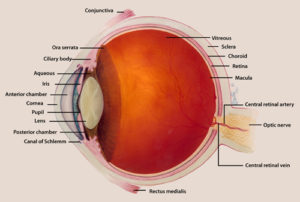Blog
Anophthalmia and Microphthalmia (Missing or Small Eyes)

What are anophthalmia and microphthalmia?
With anophthalmia and microphthalmia, one or both eyes is missing (in the case of anophthalmia) or abnormally small (microphthalmia) at birth. They are rare birth defects that may co-exist with other abnormalities that developed during pregnancy.
What causes anophthalmia and microphthalmia?
These conditions may result from genetic mutations (mistakes in DNA, the genetic blueprint for life). Some research suggests that in some causes, they may possibly result from exposure of the mother to environmental factors during pregnancy, such as:
- Chemicals, like pesticides and toxins
- Drugs
- Radiation, such as x-rays
- Certain viruses
However, the link between these factors and eye development has not been proven. In some children, there is no known cause.
How are anophthalmia and microphthalmia treated?
There is no cure for either condition to create a new eye or restore vision, but healthcare providers can take steps to improve a child’s appearance. Newborns with anophthalmia or microphthalmia will need a team of eye care professionals, including specialists in pediatrics, vitreoretinal disease, orbital and oculoplastic surgery, ophthalmic genetics, and the design of prosthetic devices for the eyes.
A prosthetic specialist can create artificial eyes to enhance facial appearance and promote growth of the eye socket. This is done in several steps as the child grows.
- Conformers. The prosthesis designer can make clear plastic structures called conformers to help support the face and optimize growth of the eye socket. As a child grows, he or she will need new conformers every few weeks until about age 2 years; they are not painted to look like real eyes because they are changed so frequently.
- Expanders. In children born with no eye(s), expanders used in addition to conformers can help further enlarge the eye socket(s).
- Prosthetic eyes. By about age 2, the child is fitted with a painted prosthesis that looks like a normal eye. Children who need conformers after age 2 receive a painted prosthesis that looks like a normal, but smaller, eye. Typically, a child may need to change painted prosthetic eyes three or four times before age 10.
- Enhancing residual vision in microphthalmia. In children with microphthalmia, there may be some limited vision remaining in the smaller eye(s). If there is a normal-sized eye, it can be patched to strengthen vision in the smaller eye. Some children receive a prosthesis to “cap” the smaller eye to improve cosmetic appearance while preserving sight in the larger eye.
Source: The National Eye Institute (NEI)